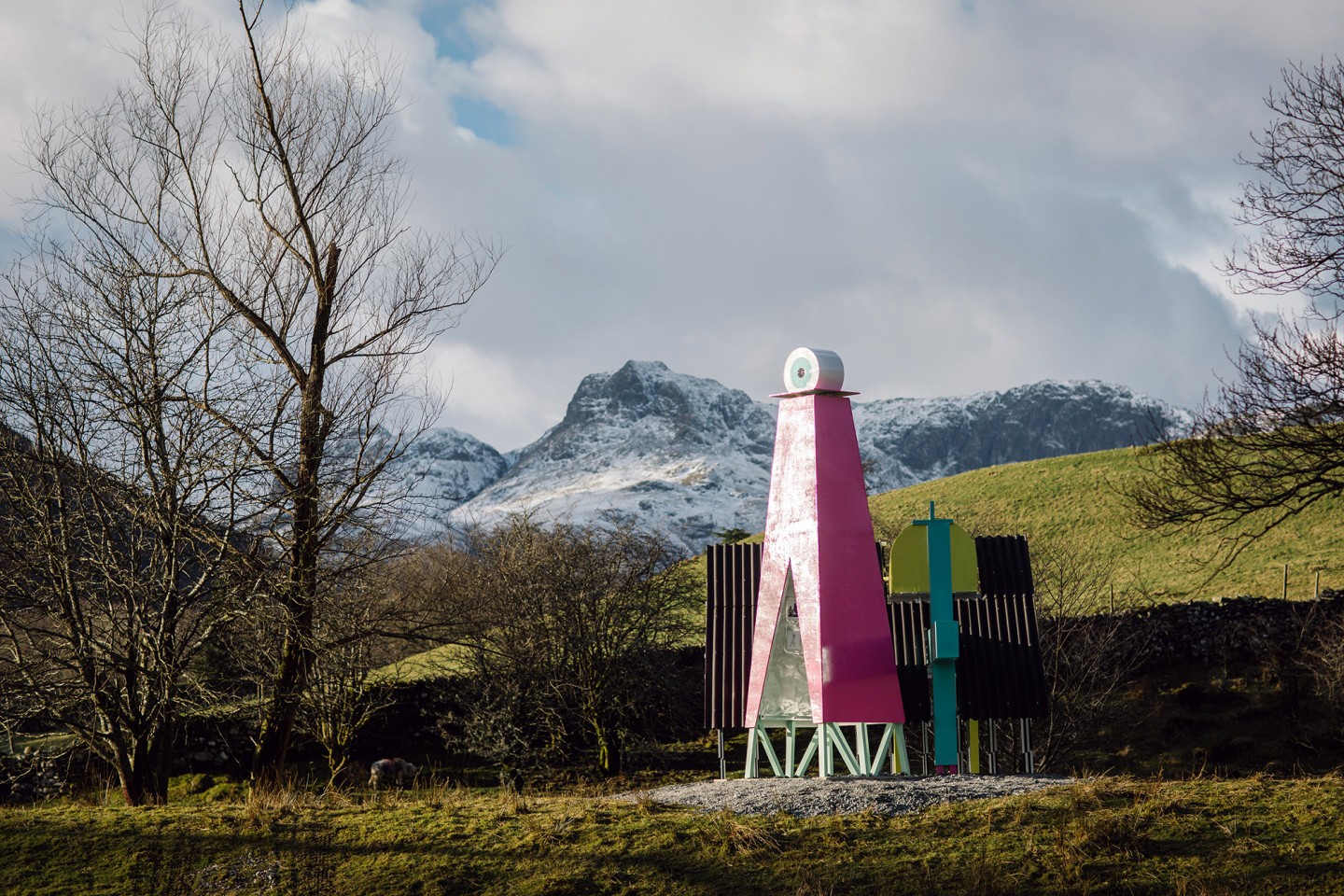For eight months, the Ordnance Pavilion sat boldly in the Cumbrian landscape of the Lake District. Its hot pink spire topped with an all-seeing eye surveyed the snow dusted hills, galloping sheep and swirling streams whilst drawing the odd perplexed glance of a walker or intrepid fell runner. The curious explored the one person galleries hidden within it, while the confused tried their best to ignore it.
It sat like a small, isolated chapel, a small fleck of colour dropped in The Lakes. After eight months, it was time to leave. The map-inspired pavilion was folded up and tucked away not to be seen again. Or so was the assumption.
Image © Steven Barber
The pavilion was temporary, cheaply built (by ourselves), installed quickly (by ourselves) and battered by the elements. The lasting image however is strong, bold and clear. It never deteriorates, ages or shows the effect of weather. This is the majority of people’s perceptions of it. Glistening, clean – perfection. Many more people have imagined the experience of the pavilion through pristine photographs than physically experienced it, which in the world of architecture is a sticky situation.
The reality is, it did not retain its new born glow. As the groundskeeper told us when we installed it, “it will do as all things do in life – rot”. So the question we ask is, does it matter that the image of the architecture has superseded the experience in instances like this? Is this not the point of temporary architecture – a testing ground for ideas that will live longer in the memory than the physical? What are the implications of today’s ‘Instagrammable’ architecture? The depth of this question surely lies around the relationship of architecture and truth.
Image © Francesco Russo
So, when asked to re-exhibit the piece in the Building Centre we wanted to do it in the most truthful way we could. It’s far too big to fit in the gallery, the eye topped trigonometric point would need to be broken in half to do that – hang on a minute…
Studio MUTT, 2019, www.studiomutt.com
Image © Francesco Russo
Studio Mutt’s Ordnance Pavilion project is on display as part of the Contemporary Cartography exhibition at the Building Centre, until 30 August 2019.
Contemporary Cartography is curated by the Building Centre exhibitions team and supported by the Built Environment Trust. It is part of the 2019 London Festival of Architecture.
With thanks to the Contemporary Cartography programme supporters, Medite Smartply, who supplied the materials for the Ordnance Pavilion installation.









